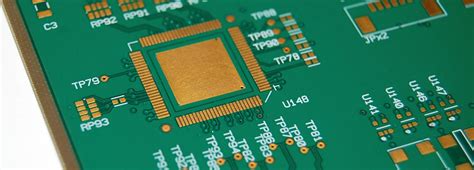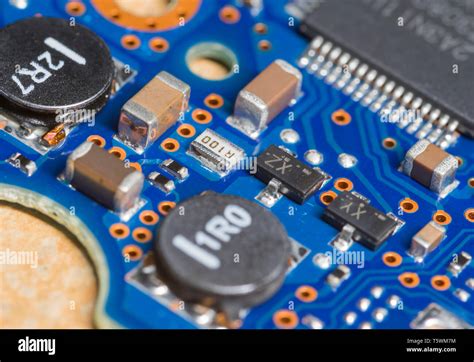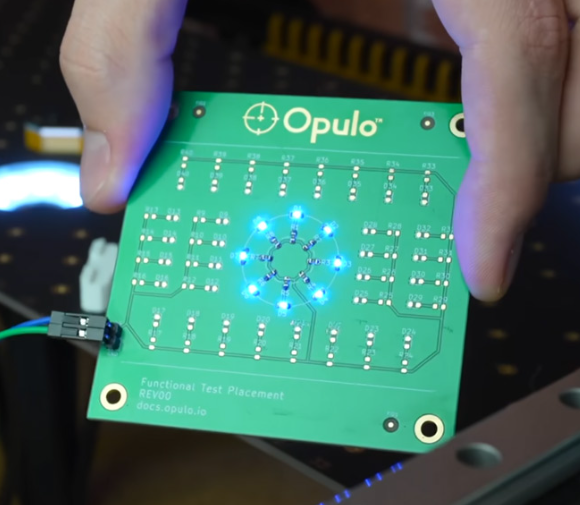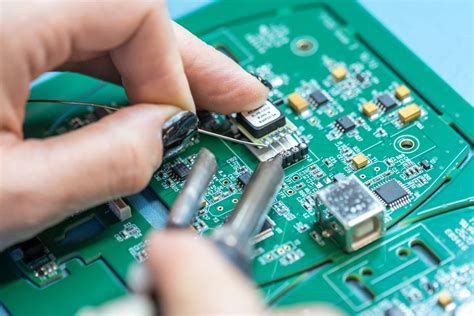It is very important to choose the right PCB design software. Have you chosen the right one?
PCB (Printed Circuit Board), Chinese name is printed circuit board, also known as printed circuit board, printed circuit board, is an important electronic component, a support for electronic components, and a provider of electrical connections for electronic components.
PCB has been the mainstay of the electronics industry since humans first connected carbon sheets and silicon sheets to form working electronic products.
PCB design has evolved from manual drawing to the current large-scale component library, powerful automatic layout and routing and other functions, making it more and more convenient for our engineers to design circuit boards.
PCB design can be specifically divided into several parts, namely schematic design, PCB layout, circuit simulation, CAM engineering software, copy board software, etc.
In PCB design software, generally two modules of schematic design and PCB design are included. Some powerful PCB design software even includes the above modules. In this article, the PCB design software we mainly talk about refers to the two parts of schematic design and PCB layout.
The reason why every industry rises and falls must have its time and space background.
The development of the PCB industry so far has a historical trajectory to follow. From the beginning, many manufacturers developed in their own areas of expertise, to the later period of continuous modification and improvement, or survival of the fittest, or mergers and acquisitions, or strong alliances, now there are only a handful of manufacturers that are well-known in China: Altium, Cadence, Mentor, Zuken, Cadsoft, and Shanghai Qingyue, etc. The following will introduce the current mainstream PCB software by manufacturer.
1 Altium Protel series
To measure the quality of a software, one of the very realistic standards is to look at its market share, that is, its popularity and popularity, then Altium Protel deservedly ranks ahead of many PCB design software. Protel series, started to be used in China earlier, basically all colleges and universities have related courses in electronic majors, and even many large companies often write in their conditions when recruiting electronic design talents that they must use PROTEL. Altium once claimed that 73% of engineers and 80% of students in electronic engineering related majors in China are using the solutions it provides, and the current genuine rate is only about 3%. Of course, e-works is also deeply saddened by the shocking piracy problem. Indeed, no better circumvention solution has been found so far, but it can be seen that the software is widely used in China.
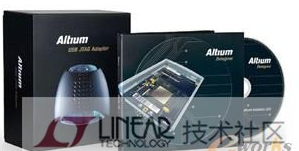
Protel is a PCB design software launched by PROTEL (now Altium) in 1985. From the initial Protel fo DOS, it was upgraded to Protel for Windows, and then in 1998, Protel 98 was launched. In 1999, the epoch-making Protel 99 and its upgraded version Protel 99 se were launched.
In 2002, Protel DXP was launched… Since then, Altium has shifted from fixed-point software product release to continuous stream release. Basically, a new version is released every year, and then a version named Altium Designer + season is released. The latest version is Altium Designer 10, which was released in March 2011.
At present, the number of people using Protel 99se for PCB design work is still quite large. Protel 99se has made a huge contribution to the PCB design industry.
Whether it is the widely used Protel99 or the subsequent versions, they all provide an integrated design environment, including schematic design and PCB wiring tools, integrated design document management, and support for workgroup collaborative design functions through the network.
Since Protel DXP/DXP2004, new FPGA design functions have been provided; since Altium Designer 6.0, the design process, integrated PCB design, programmable device (such as FPGA) design and processor-based embedded software development functions have been integrated; since Altium Designer 6.8, 3D PCB visualization and navigation technology has been added, through which designers can view the precise shaping of the board at any time and share information with other members of the design team; when Altium Designer 10 was released, the Internet-based Altium Vaults and AltiumLive were launched at the same time. Altium Vaults constitutes the core of Altium’s intelligent data management technology, which stores and manages electronic design data; AltiumLive is an online environment for downloading, trading and sharing electronic design content.

Of course, there are also engineers who complain about the Protel series software, such as occupying most system resources when running, high requirements for system configuration, too complicated menus, not suitable for high-speed PCB design, and less use by companies, especially foreign companies, etc. However, because it is the “first close contact” software for most domestic engineers, there are still quite a few engineers who may have a special liking for Altium Protel due to nostalgia or preconceived reasons. Even if Altium has an upgraded version, they will not change it at will. In short, this is a very good PCB design software suitable for both enterprises and individuals.
【About Altium】
Altium (formerly known as Protel International) Co., Ltd. was founded by Nick Matrin in Hobart, Tasmania, Australia in 1985 to develop computer-based software to assist in printed circuit board (PCB) design. In 2003, a representative office in China was established to strengthen the Chinese reseller network.
2 Cadence products
Cadence’s products are concept/allegro and the acquired orcad. Cadence launched OrCAD’s strong schematic design Capture CIS together with Cadence’s original schematic design concept HDL, PCB tool Allegro and other signal simulation tools and collectively called them Cadence PSD, now called SPB.

Figure 2 Cadence SPB
2.1 Cadence Allegro
Cadence Allegro has now almost become the de facto industrial standard in high-speed board design. The latest version is Allegro 16.5 released in May 2011. Combined with its front-end product Capture, it can complete high-speed, high-density, multi-layer complex PCB design and wiring work. In order to promote the entire advanced EDA market, Allegro provides interfaces such as OrCAD PCB Editor, PADS, and P-CAD, so that users who want to convert PCB Layout software can smoothly convert old drawings to Allegro. Allegro has many advantages such as easy operation, friendly interface, powerful functions (for example, in terms of simulation, signal integrity simulation and power integrity simulation can be done), good integration, etc. It firmly occupies a dominant position in the field of PCB high-speed boards. 60% of computer motherboards and 40% of mobile phone motherboards in the world are drawn with Allegro. It is widely used in the communication field and PC industry. It is known as a popular tool among high-end PCB tools.
Cadence Allegro system interconnect design platform reduces costs and accelerates time to market through constraint-driven collaborative design between IC, package and PCB. The SPB (Silicon-package-board) product line is currently included in the Allegro platform, and all product names have been changed.
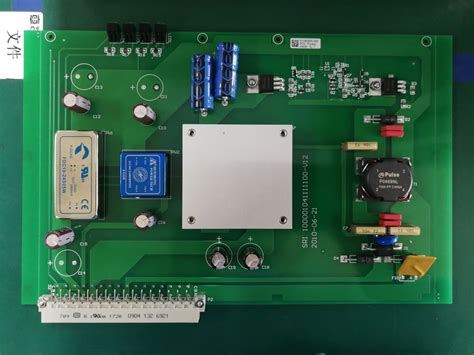
2.2 Cadence OrCAD Capture
OrCAD Capture is known as the most used circuit diagram drawing program + the most powerful software for drawing schematics in the world. The reason why it is recommended is that it has more libraries, does not require you to build components, and is easy to integrate with other software (such as: Ansoft, Mentor’s software), and it is easy to interact with various tools. It provides all the functions you need to design a new analog circuit, modify an existing PCB circuit diagram, or draw a block diagram of an HDL module, and can quickly verify your design.
OrCAD Capture is a design input tool that runs on the PC platform and is used in FPGA, PCB and OrCAD PSpice design applications. It is the industry’s first true Windows-based circuit diagram input program. Its easy-to-use functions and features have made it an industrial standard for circuit diagram input.
OrCAD Capture can be used to connect Cadence OrCAD PCB Editor, Allegro or other Layout software to complete PCB design.
Note: Cadence’s products have changed rapidly in recent years, and there are multiple series such as Orcad/SPB/PSD. Many beginners will be confused about what Orcad, SPB and PSD are? In fact, all three are Cadence’s PCB design suites based on capture and allegro, and the only difference is the software configuration. Orcad is a low-end product with the advantage of low price. However, Allegro in Orcad is relatively weak, with only basic functions but no constraint manager. If SI or constraint manager is needed, additional configuration is required. PSD is the early name of SPB.
【About Cadence】
Cadence was founded in May 1988 and is headquartered in San Jose, California, USA. Cadence’s electronic design automation products cover the entire process of electronic design, including system-level design, functional verification, IC synthesis and layout and routing, analog, mixed-signal and RF IC design, full-custom integrated circuit design, IC physical verification, PCB design and hardware simulation modeling. In 1992, it entered the Chinese mainland and Hong Kong markets, and then successively established four offices in Beijing, Shanghai, Shenzhen and Hong Kong, as well as Beijing R&D Center and Shanghai R&D Center.
3 Mentor Products
Mentor’s products are boardstation (EN) and expeditionpcb (WG) and acquired pads (powerPCB). PCB tools Mentor has been gradually integrated together. The most advanced one is Board Station RE and WG’s PCB tool Expedition PCB seamlessly switch. Speaking of PCB tools, we have to mention the XtremePCB platform, which allows several PCB engineers to design a PCB together on different clients, which can greatly improve the product design progress.

Figure 3 Mentor PADS
3.1 Mentor EN
Mentor EN, namely Mentor Board Station, is a high-end professional schematic and PCB design software launched by Mentor Graphics. It supports both Unix and Windows systems (Win2000 and Win XP). EN is the abbreviation of Enterprise. The schematic of EN is BA, which is super cumbersome, but the function is still very powerful. It only considers the construction period but not the cost. It is always the first choice for communication and military research institutes that make 8-layer to 12-layer PCBs. There are also many large IT companies, such as Intel, Lucent, Flextronics, Siemens, and Bird, who use Mentor EN for PCB design. However, there are not many engineers in China who can use Mentor EN, and it is difficult to learn, so self-study is not recommended.

